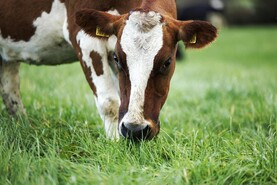There’s a saying in agricultural economics that nothing cures high prices like high prices.
The theory being that when prices are good, farmers produce more, supply increases and prices fall.
It’s not the same, but similar when it comes to grass growth. The actions that farmers take to manage grass growth and quality usually result in a reduction in growth.
Firstly, it needs to be acknowledged that managing grass is very difficult at present.
It’s much more difficult to manage now as it is in the reproductive stage, whereas the big burst in growth normally comes in early May, when grass is still in the vegetative stage.
The difference being that when grass is in the vegetative stage, it continues to grow leaf to develop a stem, whereas when grass is reproductive, all it wants to do is to produce a seed head and it needs a stem to support the seed head.
Digestibility
This stem is the enemy of quality, as it’s a tough, lignin type material, which is high in fibre and very low in digestibility.
On most farms, grass quality has declined sharply over the last few days due to the amount of stem present in swards.
Radical action needs to be taken to reduce the surplus on the farm
The normal advice to skip over paddocks that have gone too strong is not good enough, as almost all paddocks have gone too strong.
However, radical action needs to be taken to reduce the surplus on the farm. If this means skipping over 20% to 30% of the milking platform so be it.
The key thing is to take out these surplus paddocks as soon as possible and get them back growing.
Possible shortage
Delaying cutting can result in a grass shortage when growth rates reduce.
The next step is to try to improve quality in the next round.
I think this is not a good policy given how poor the quality is in swards now
I see some farmers are pre-mowing grass. I think this is not a good policy given how poor the quality is in swards now.
By pre-mowing, you are removing the cow’s ability to select the nicer grass and leave the worst.
Dare I say it, but topping might be the best solution. At least the cows can select the nice grass and the subsequent regrowth will be higher quality.
The downside to topping is that grass is being wasted and regrowth is slower - slower than cutting for bales or pre-mowing.
This is because there will always be some level of regrowth after grazing and when a farmer comes in to top a field, that regrowth is getting nicked off.
Most of the grass root reserves went in to pushing up that regrowth, so killing it means there’s no regrowth and there’s much less energy to push up another regrowth. In many cases, that grass tiller will die.
Be careful not to do too much topping, pre-mowing or cutting for silage as all three will slow down re-growth.
Soil moisture deficits
Some farmers along the east and southeast have not had rain for two weeks or more and a soil moisture deficit is building. However, there is a chance of rain for later in the week.
Keep measuring grass every five to six days and adjust management according to growth rates and average farm cover (AFC).
I think setting AFC at between 160kg and 180kg/cow is prudent at the moment.
One thing is for sure, high growth rates won’t last forever and doing a lot of mechanical cutting will decrease growth rates faster than anything. This will be a necessary evil on many farms.






 This is a subscriber-only article
This is a subscriber-only article











SHARING OPTIONS: